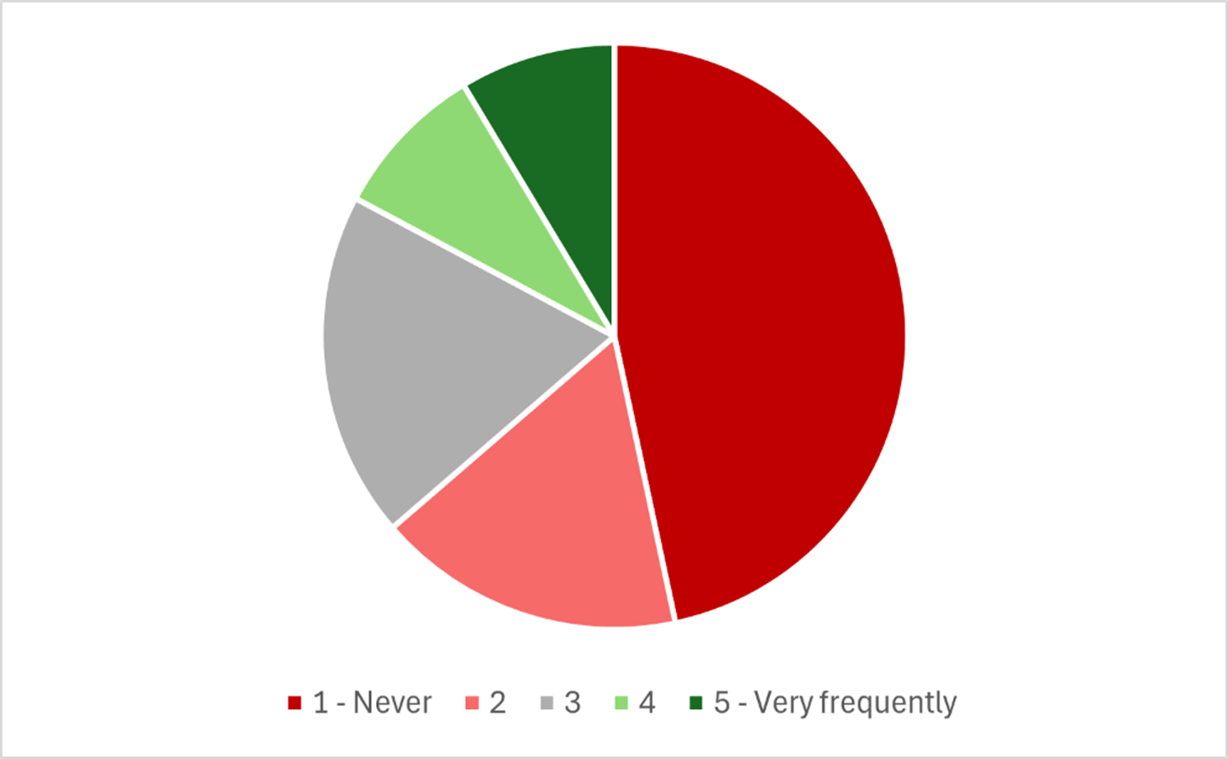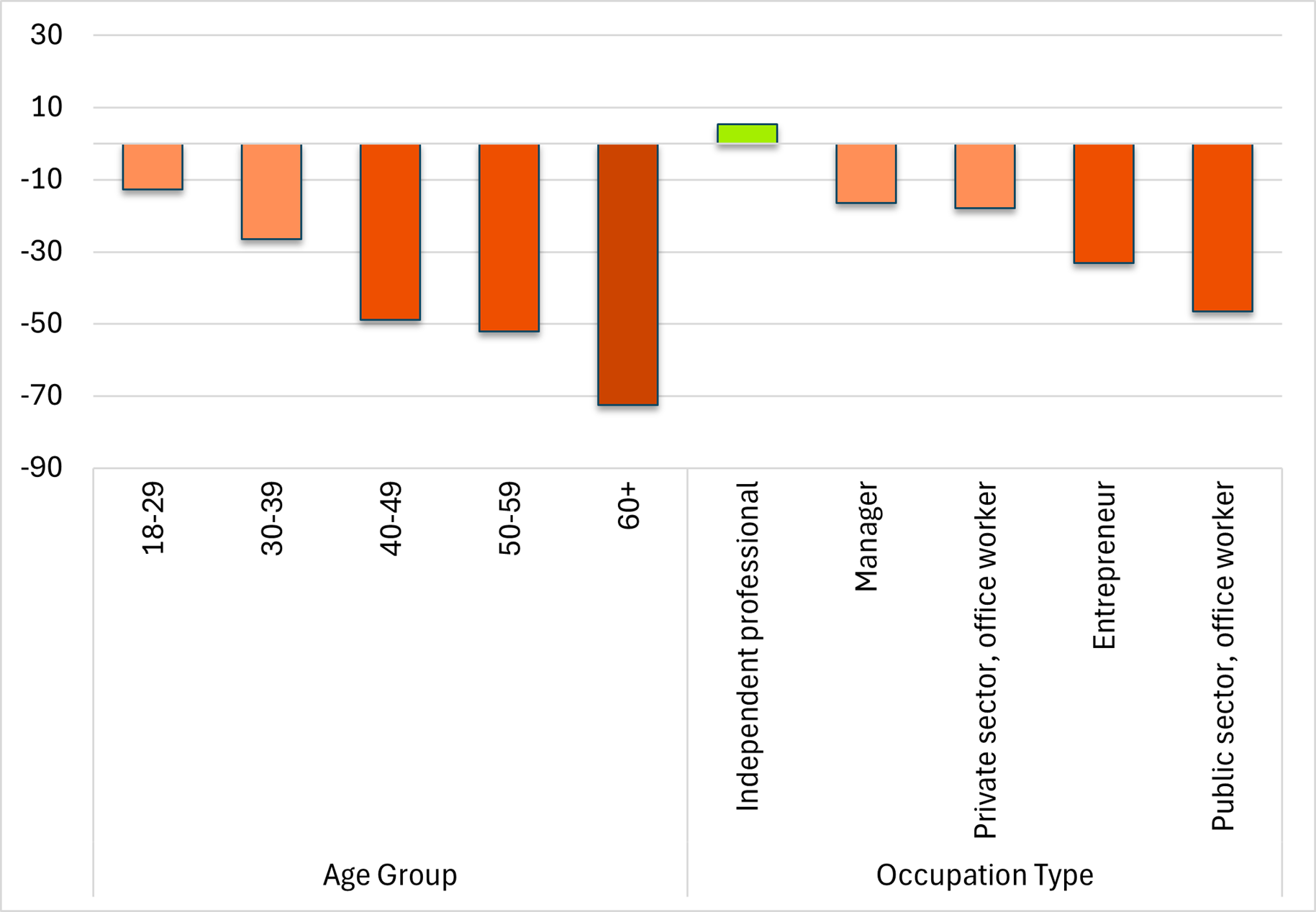
In July, the GKI Institute conducted a survey of 1,000 people representative of the Hungarian population, examining the prevalence of Artificial Intelligence (AI). Who uses AI, and for what purposes? How widespread is it in Hungarian workplaces? These are the questions the study seeks to answer.
Nearly half of respondents said they never use AI in connection with their work or studies, and a further 17% reported doing so only very rarely. On the other hand, 8% use AI frequently, while 9% do so very frequently. When it comes to personal use at home, the picture is somewhat more encouraging: 64% have used AI for private purposes, one-third of whom – roughly 20% of the total sample – do so on a regular basis.
How frequently do people use AI-based software in their work or studies?
Source: GKI Survey
From a demographic perspective, age makes the biggest difference: the younger the person, the more likely they are to use artificial intelligence.
Among surveyed students, 90% have used AI in their studies, 42% do so very frequently, and an additional 16% use it regularly. Among those actively employed, 56% report using some form of AI application at work, with 17% doing so frequently or very frequently. As younger generations enter the labour market, their familiarity with AI is likely to accelerate its spread in the workplace.
Attitudes Toward Workplace AI Use – Net Scores by Age Group and Occupation
(Lower values indicate less frequent usage)

Source: GKI. Note: Responses have been reweighted onto a scale from –100 to +100, where –100 indicates no AI use at all, 0 represents moderate frequency, and +100 denotes very frequent AI use.
Among occupational groups, independent intellectual workers lead in AI use for their work. They are followed by managers and office employees in the private sector. AI adoption is less common among entrepreneurs and even less so among office workers in the public sector.
In the capital city – partly due to the larger share of the service sector – the proportion of AI users is higher than in other types of settlements. Encouragingly, no significant differences are observed in AI use between men and women.
While 70% of respondents perceive some level of threat from AI to their jobs over the next five years, only 5% consider this threat significant. Notably, younger individuals who use AI more enthusiastically also tend to worry more about their job security. Similarly, students express greater concern about their future employment than those currently working. The sense of threat is strongest among office workers in the private sector, whereas independent intellectual workers are less worried about AI displacing their jobs.






